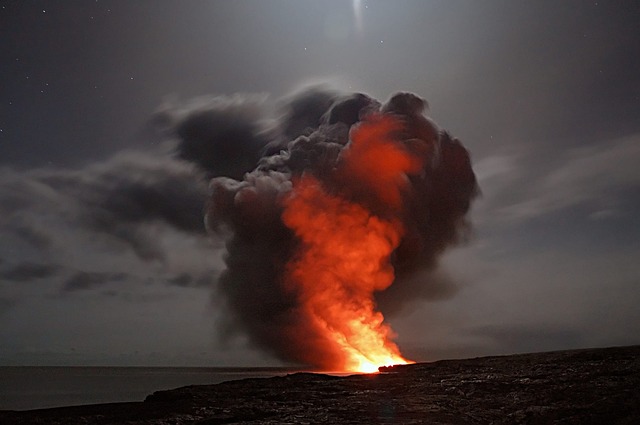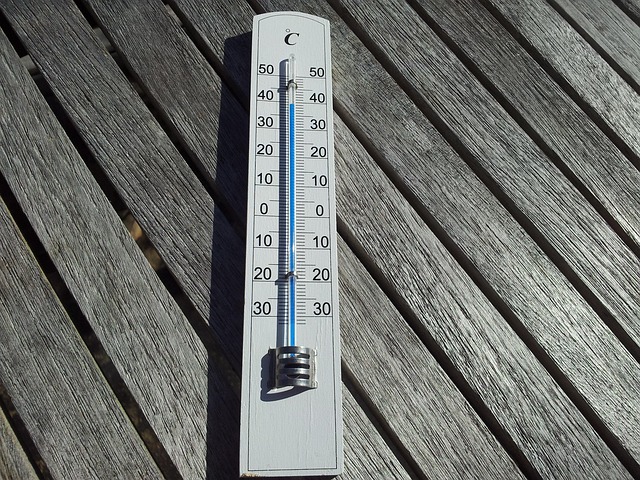Heat maps analyze user behavior on digital interfaces, guiding content placement and design through identifying interaction patterns and preferences. Personalization leverages heat data to understand behavior, enhance engagement, and optimize climate control strategies for microclimates. Predictive Analytics uses heat distribution patterns to forecast user interactions, enabling tailored experiences. Ethical considerations include responsible use of temperature-sensitive elements and prioritizing user consent in heat-based personalization.
Unleash the power of heat as a dynamic tool for personalization strategies. In today’s digital landscape, understanding user behavior through heat maps is crucial. This article explores how to harness heat data for tailored experiences. From engagement heat to session replay, we delve into techniques to enhance UX and predict user interactions. Discover how ethical considerations shape heat-driven personalization, ensuring a harmonious balance between technology and user privacy.
- Understanding Heat Maps for User Behavior
- Personalization Through User Engagement Heat
- Tailoring Content Based on Heat Data
- Enhancing UX with Session Replay Heat
- Predictive Analytics: Forecasting User Interaction
- Ethical Considerations in Heat-Driven Personalization
Understanding Heat Maps for User Behavior

Understanding Heat Maps for User Behavior
Heat maps are invaluable tools that visualize user interactions on digital interfaces, offering insights into behavior patterns and preferences. By tracking where users click, hover, or scroll, heat maps create a vivid picture of engagement hotspots. This data is crucial for personalization strategies, enabling businesses to optimize their digital experiences. For instance, identifying prominent call-to-action (CTA) buttons or frequently visited sections can guide content placement and design decisions.
These maps go beyond simple click tracking; they also reveal user thermotolerance mechanisms in digital environments. Just as a heat engine efficiency limits heat transfer in fluids, websites with excessive or concentrated heat may overwhelm users, leading to drop-offs. Conversely, areas of low interaction suggest opportunities for improvement. Energy-efficient construction thermography imaging techniques can be analogized to heat map analysis, where identifying and addressing “cold spots” enhances user comfort and engagement. Visit us at alloy composition effects anytime to explore innovative personalization strategies powered by this insightful data.
Personalization Through User Engagement Heat

Personalization Through User Engagement Heat plays a pivotal role in enhancing user experiences and fostering deeper engagement with digital platforms. By leveraging heat maps, businesses can understand user behavior patterns, identifying areas of high interest and potential friction points. This data-driven approach enables them to tailor content, design layouts, and functionality to match individual preferences, creating a more intuitive and enjoyable experience. For instance, through analyzing mouse movements and click patterns, companies can optimize call-to-action placements, ensuring they capture users’ attention at the right moments.
The concept of laminar vs turbulent flow is relevant here, as smooth, laminar heat distribution can enhance user comfort and focus, encouraging longer interactions. Conversely, abrupt temperature changes or chaotic turbulent flows might disrupt concentration. Utilizing indoor climate control thermoelectric effect principles, businesses can create microclimates that support specific activities, whether it’s a cozy reading corner or an energizing collaborative space. Even the calculation of specific heat capacity, which measures a material’s ability to absorb and store thermal energy, can inform design decisions by impacting overall system efficiency and user comfort levels. Visit us at concentrated solar power anytime for innovative solutions leveraging these principles.
Tailoring Content Based on Heat Data

Personalization is a powerful tool to engage and retain users, and leveraging heat data takes it to the next level. By understanding where users interact with your content or interface, you can tailor experiences to their unique preferences. Heat data, generated by tools that track temperature changes in response to user interactions, provides valuable insights. It reveals the most-visited areas of a webpage, highlighting popular content and features.
Using Fick’s laws of diffusion, which describe heat transfer, these temperature profiling tools allow us to visualize user behavior. For instance, identifying hot spots on a website can guide content placement. Popular articles or calls-to-action (CTAs) with high engagement will have correspondingly elevated temperatures. This information enables marketers and designers to create personalized experiences by showcasing relevant content in prominent areas, ensuring users encounter their preferred offerings first. Contact us at heat energy types thermal dynamics for more insights on harnessing the power of heat in your personalization strategies.
Enhancing UX with Session Replay Heat

In today’s digital landscape, understanding user behavior is crucial for enhancing User Experience (UX). Session Replay Heat maps this behavior by visualizing interactions with your website or app in real-time. This powerful tool enables businesses to see where users click, scroll, and focus their attention, providing insights that can be used to optimize layouts, simplify navigation, and create more engaging experiences. By leveraging heat data, you can identify areas of high engagement and potential pain points, allowing for strategic personalization strategies that cater to individual user preferences.
The Seebeck Effect applications in heat analysis play a significant role in energy conservation laws governing digital spaces. By efficiently managing thermal distribution, platforms can reduce energy consumption and operational costs. Unlike traditional heat exchanger corrosion concerns, modern session replay tools focus on maximizing the benefits of heat—both as a data indicator and an optimization tool. Visit us at Heat Exchanger Design Factors anytime to learn more about how innovative solutions can enhance your digital environment while preserving resources for the future.
Predictive Analytics: Forecasting User Interaction

Predictive Analytics leverages heat—in both its physical and metaphorical senses—to forecast user interaction, enhancing personalization strategies. By analyzing patterns in heat distribution, businesses can gain profound insights into customer behavior. This data-driven approach predicts how users engage with products or services, allowing for tailored experiences that resonate deeply. For instance, understanding heat transfer in fluids can reveal trends in online platform usage, enabling optimization of content placement and user routing.
This method goes beyond the limitations of traditional engine efficiency, where heat is a byproduct, to treat it as a core element for insights. Comparing endothermic and exothermic processes offers unique perspectives on user dynamics, with heat distribution patterns acting as thermometry instruments that measure interest and interaction. Even visiting us at psychrometric charts anytime can provide practical tools for interpreting these heat maps, helping businesses craft more effective personalization strategies.
Ethical Considerations in Heat-Driven Personalization

When leveraging heat for personalization strategies, it’s crucial to navigate the ethical landscape carefully. The cellular response to heat plays a significant role in how individuals interact with personalized experiences, and understanding this biological process is key. Techniques such as temperature-sensitive materials and heated touchpoints can create unique and tailored interactions, but they must be implemented responsibly. For instance, studying contact angle measurements and heat transfer diagrams helps ensure that these strategies enhance user comfort without causing discomfort or harm.
Moreover, exploring heat diffusion equations allows for precise control over temperature gradients, enabling more nuanced personalization. However, it’s essential to remember the distinction between endothermic vs exothermic processes. By considering these scientific principles, brands can create engaging experiences while respecting user autonomy and well-being. Always prioritize informed consent and transparency in how heat is utilized to shape personalized interactions.
Heat analysis is a powerful tool for personalization strategies, offering insights into user behavior and engagement. By understanding heat maps, leveraging session replays, and employing predictive analytics, businesses can tailor content and enhance UX. However, it’s crucial to consider ethical implications to ensure responsible use of heat data in personalization efforts.
